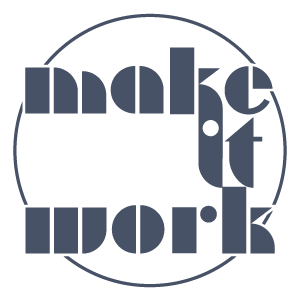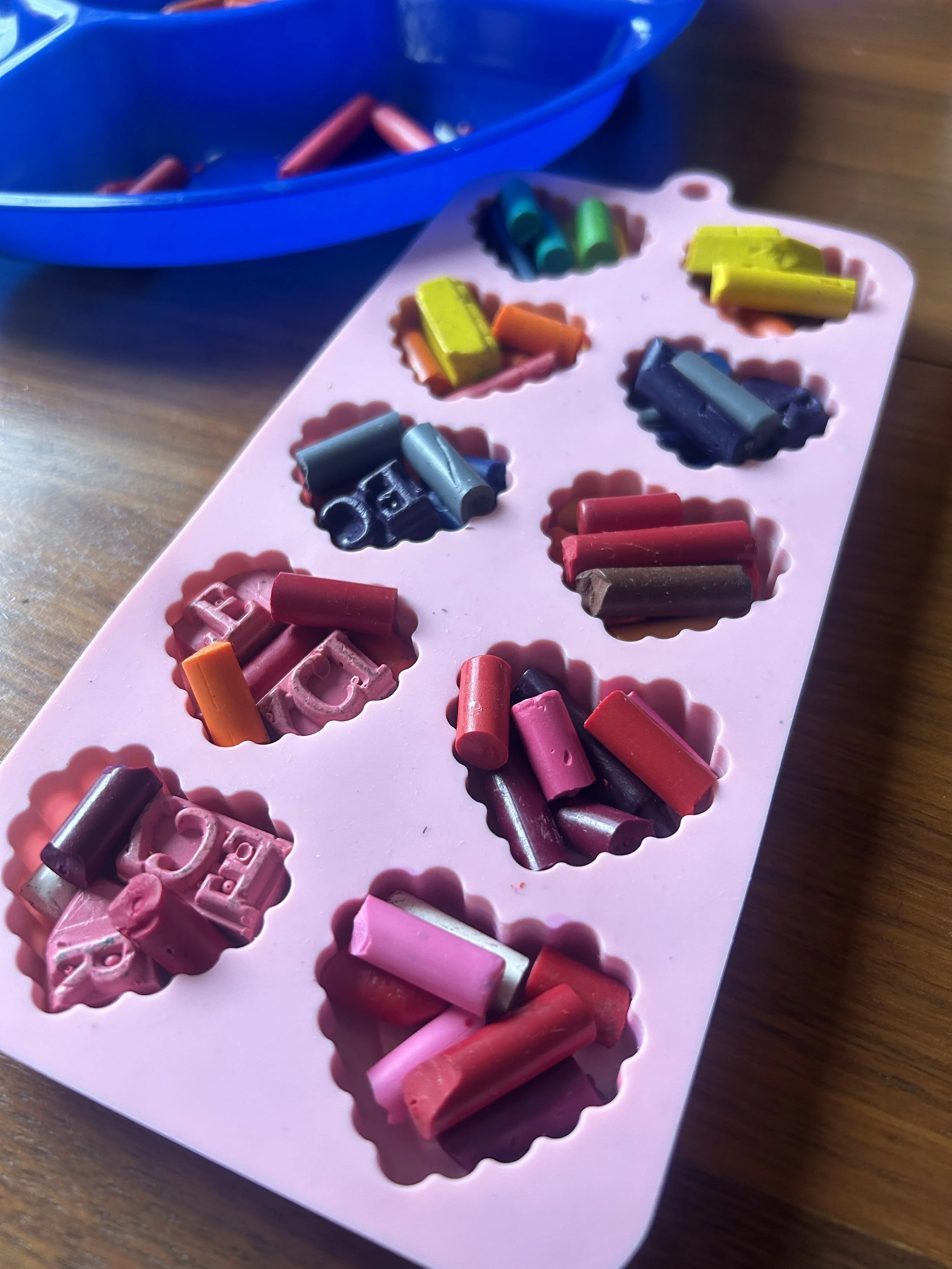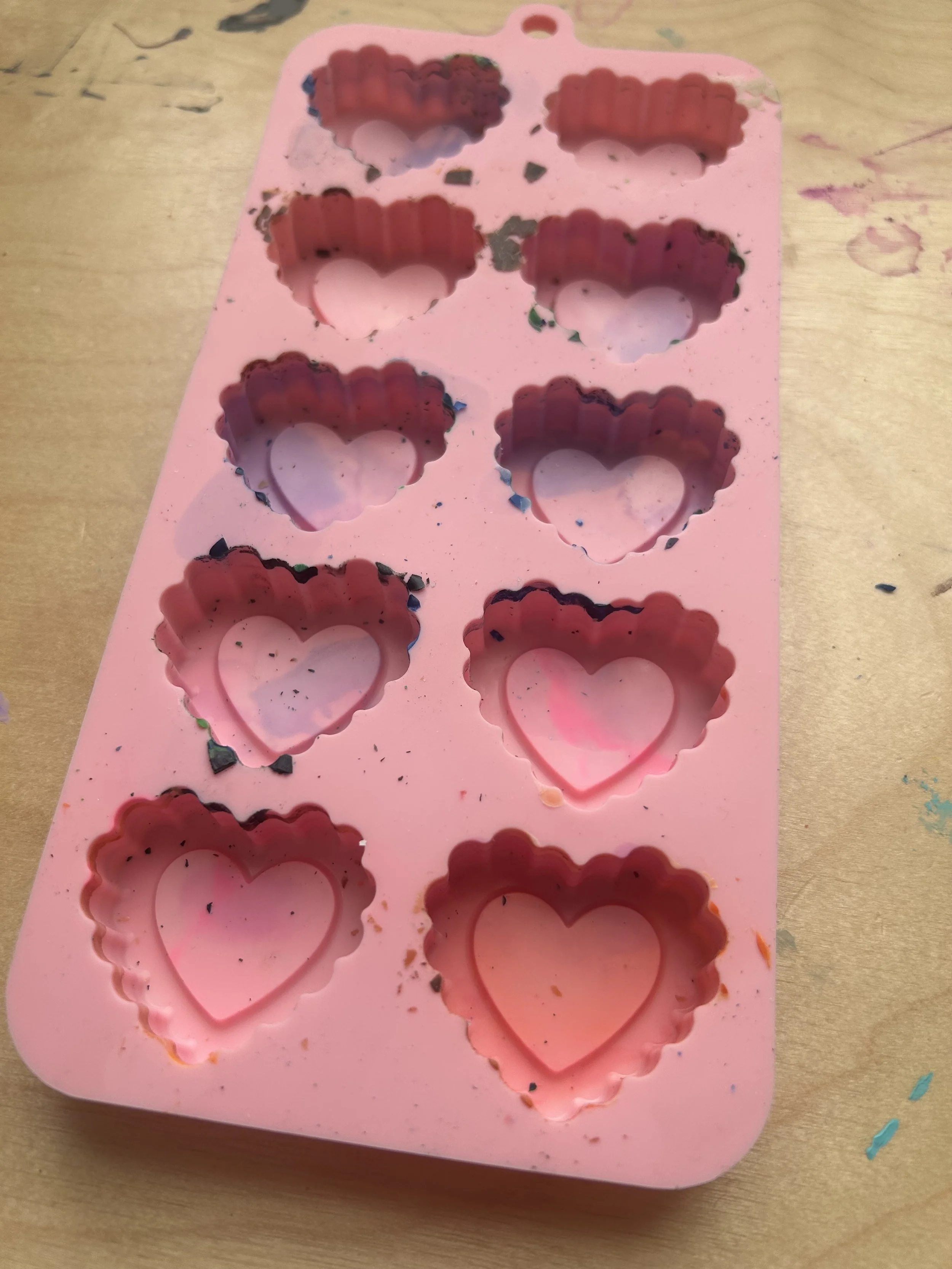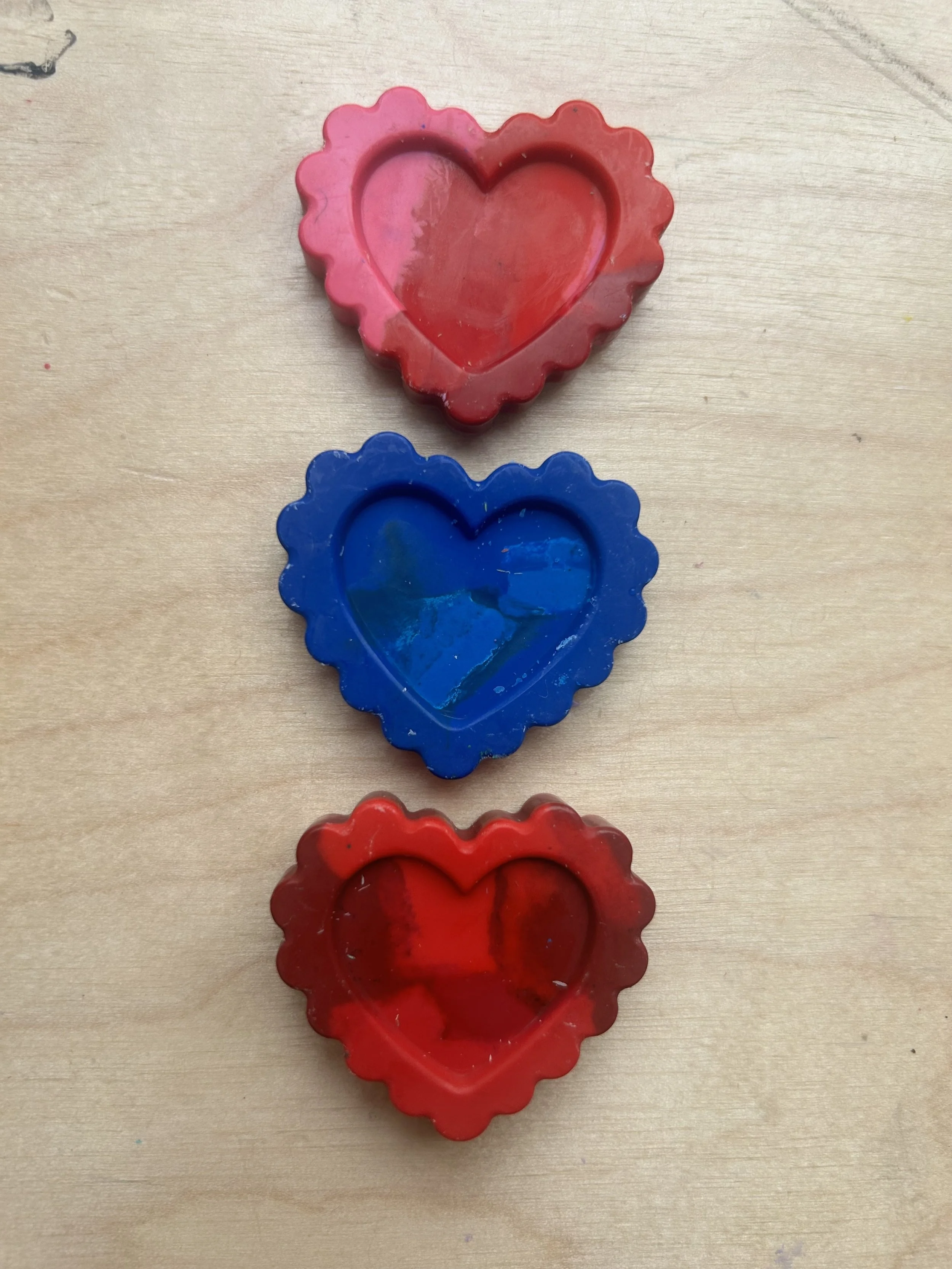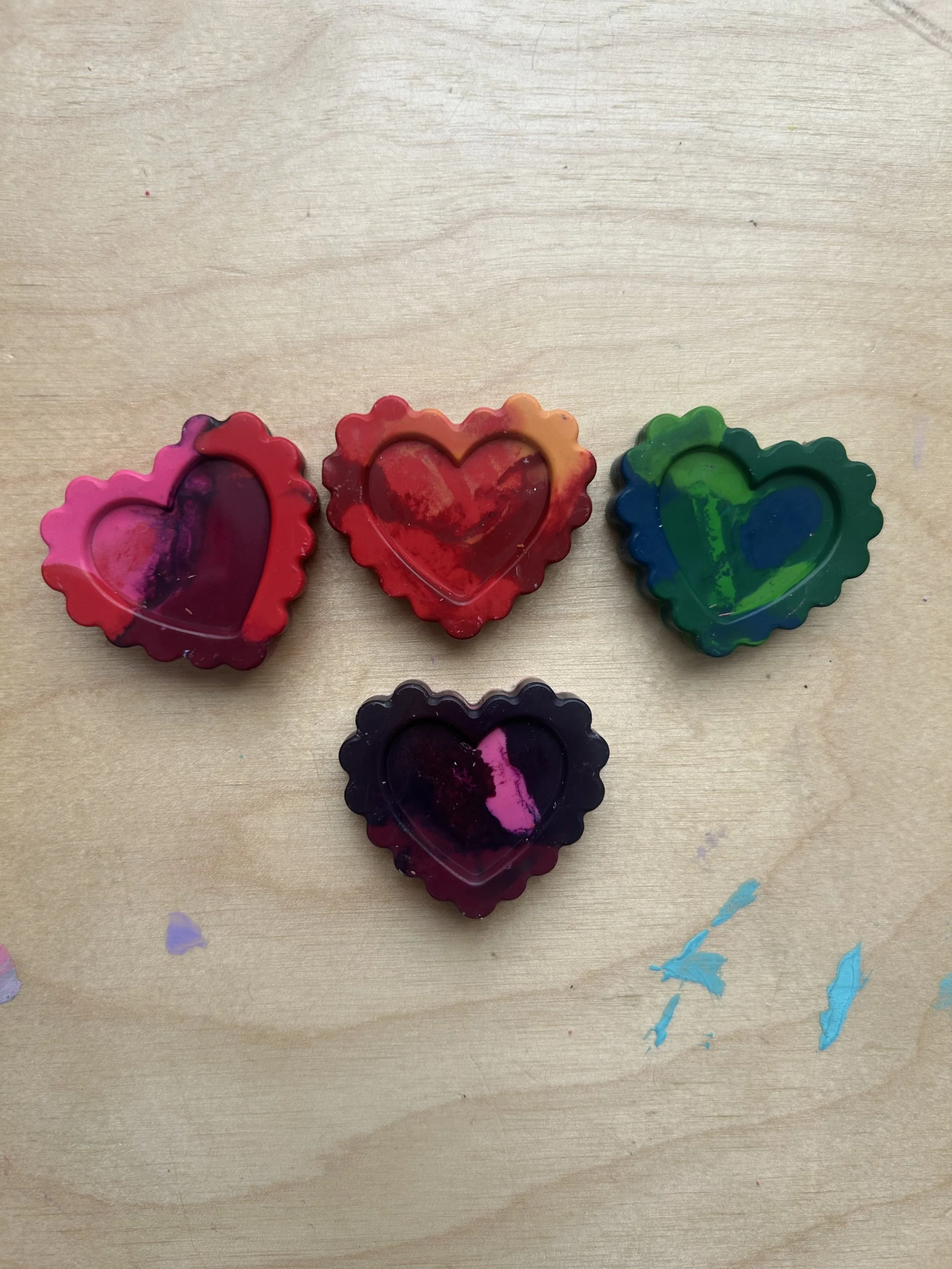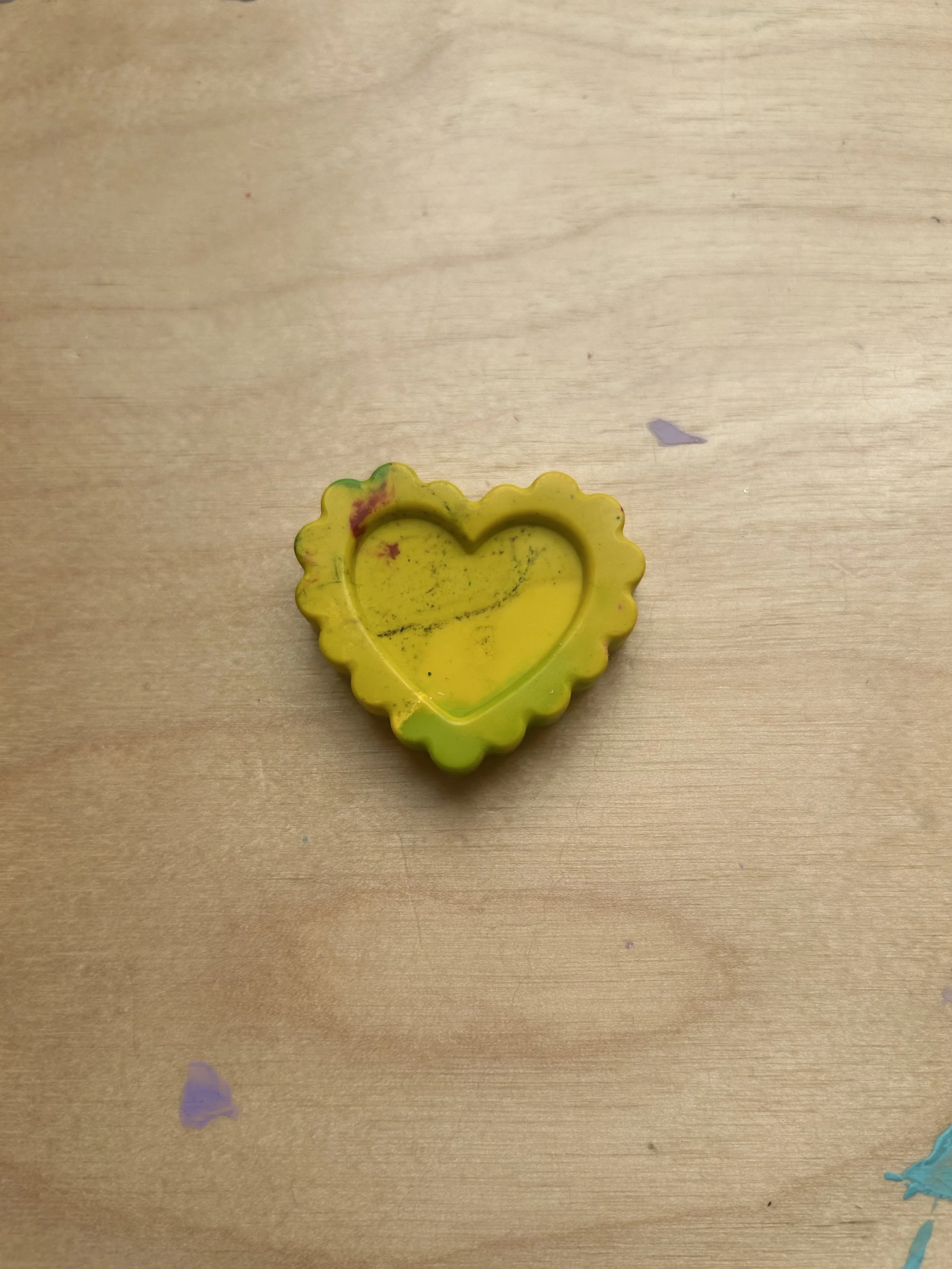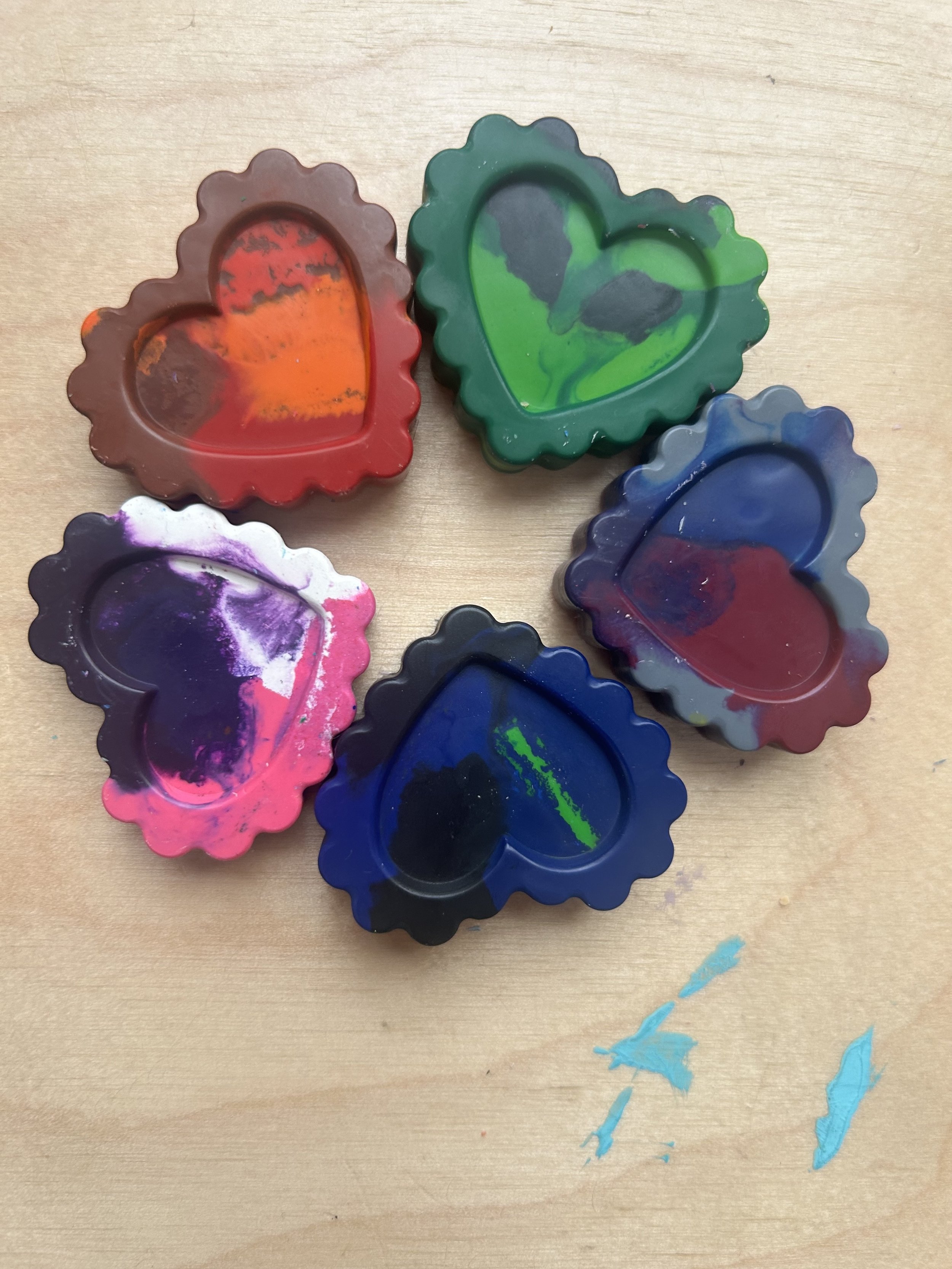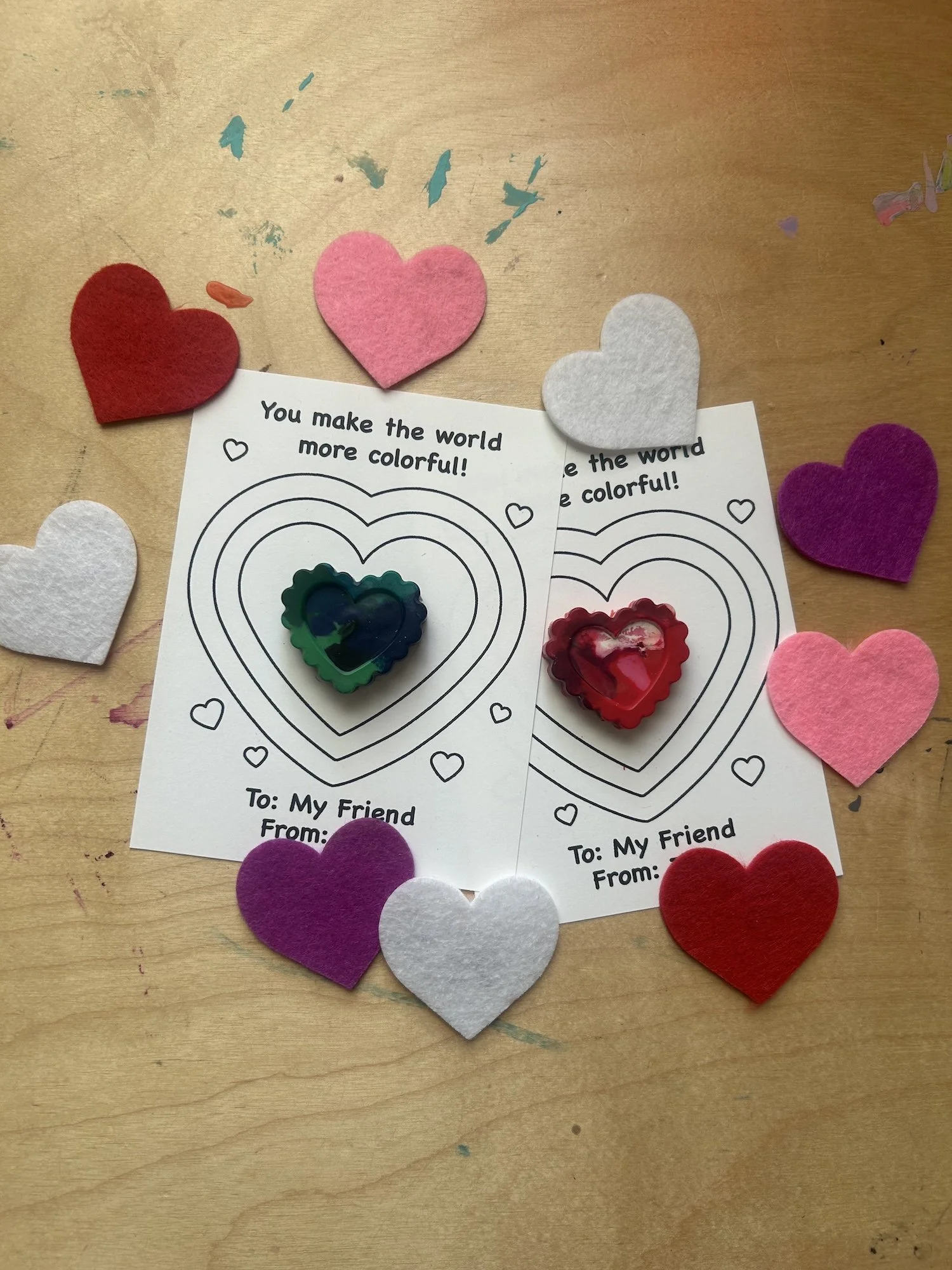Heart Crayon Valentines
Upcycled heart shaped crayons made from broken crayons.
Everyone has an opinion about Valentine’s Day. Some think the day is a sweet way to remember those that we love. Others think that the day is a Hallmark holiday made up to drive sales during a bleak time of the year. No matter your opinion, it is fact that children overwhelmingly celebrate this holiday at school. Some kids embrace it and other kids reluctantly go along with it. And parents have to go along with the holiday despite their adult opinions. As a parent of preschool-aged girl who loves hearts, I am fully embracing the holiday after years of bemoaning the cheesiness of it all. The awesome thing about parenting is that you get to be cheesy to make your child happy.
Together we upcycled my daughter’s old broken crayons into heart crayons for her classmates. It’s a simple craft that allows for some fun STEAM lessons along the way.
How did we do it?
Step 1: Color Sorting
Recycled heart shaped crayons and crayons without their wrappers
Separating the colors into color groups (blues, reds, greens, yellows, purples) will allow for aesthetically pleasing cohesive mixes. If you have the 64 pack of crayons or even a variety of different brands, than you should have shades of colors from the same color families. My preschooler enjoys this part. If you have an elementary or middle school-aged child you can discuss warm and cool hues. Visit my color guide for more information on color science.
Step 2: Remove the Wrappers
You can soak them off or cut them off. I chose to cut off the wrappers using the blade of my scissors or a craft knife. Just cut a slit along the seam of the wrapper (where the wrapper edges meet) and pull the wrappers off. You can also remove the wrappers by soaking them in warm water for a few minutes.
Step 3: Put Crayons Into the Mold
Crayons with wrappers removed sorted into a heart shaped silicone mold.
You are welcome to use any silicone mold you would like to create the shape you want. I’ve seen crayons that look like Lego bricks, bears, and dinosaurs. We made hearts because of Valentine’s Day. Just keep in mind that your mold should be oven-safe.
Break the crayons to fit into the molded shapes. This is a great fine motor skills exercise for kiddos.
Safety note: The silicone mold should be dedicated to crafting when you finish with this project. Some wax residue still clings to the silicone. There may also be discoloration. Please do not use your silicone mould for food or candy making once you created the recycled crayons. Feel free to use it for other crafts though.
Heart shaped silicone mold with wax residue after removing the recycled crayons.
Ideas for Color Combinations
Three monochromatic heart crayons; pink, blue, and red.
Monochromatic- a color scheme comprised of various shades of the same hue. Think red, pink, and maroon.
Analogous- a color scheme featuring hues that are next-door neighbors on the color wheel. For example: Green, blue-green, and blue are analogous hues.
Four upcycled heart crayons in analogous color schemes.
Achromatic- a color scheme made up of shades of grey, black, and white. A great color combo for a future goth. It’s giving Wednesday Addams.
Complementary Colors- two hues that are across from each other on the color wheel. Blue and orange. Red and green. Yellow and purple. These are all team color combos.
Triad -Three hues that are equally distanced on the color wheel. The primary colors (red, blue, and yellow) are a triad as are the secondary colors.
Split Complementary- One hue combined with the hues on each side of its complement. For example: blue, red-orange, and yellow-orange are split complementary. Red, blue-green, and yellow-green are another example. Yellow, red-violet, and blue-violet are yet another example.
Yellow and green heart crayon with a tiny bit of red wax.
Warm or Cool Colors
Group colors together by visual temperature. Without getting deep into color theory, you can just group colors by warm and cool. Warm hues are typically reds, yellows, oranges, and browns. They are colors that can be found in a desert or during autumn. Cool hues are often used for winter landscapes or the sea. Blues, greens, purples, and grays are typically cool colors. See my post on warm and cool colors to learn more about this.
Add neutral colors (white, black, brown) to the chromatic colors to create a stunning combination.
Chromatic heart crayons with neutrals in the color combinations.
Step 4: Melt the crayons
Preheat your oven to 325 F for about 10-15 minutes. Place the filled silicone mold onto a cookie sheet. Melt the crayon wax for 10-15 minutes in the oven or until all the crayons are liquified. Some crayon brands take longer than other to liquefy.
Solid+ Heat + time = liquid
To add some STEAM to this craft, turn on the oven light and observe the melting process through the window of the oven door. When you take it out, talk to your child about how the crayons were solid and now are liquid after being exposed to heat for a period of time. This is basic chemistry. Observe how the colors mix together but also retain their pure color.
Step 5: Let the Crayons Cool Down
Let the crayons cool down in the silicone mold for about 1-2 hours. Make sure they are completely at room temperature before removing the crayons from the mould. If the mold is still warm, it may cause the wax to not take its intended shape. Go do something else like make another craft while you’re waiting. If you leave the wax in longer than 2 hours then it will be okay. Nothing will happen to your crayons.
Step 6: Remove the Crayons
Slowly peel the crayons from the silicone mold. If you have any small sections, be careful while peeling off the mold since it could cause the piece to crack.
Observe and talk with your child about how the crayon is now solid. What does your child observe about the solid version? Maybe the bubbles that are on top of the mold are now solid.
How to Make This a STEAM Project
If you want to get really scientific, then you can run experiments.
Talk about the swirl patterns that are created. Before melting the crayons take a photo of the placement of the crayons in the mold. Did the placement of the crayons affect the swirl patterns on the finished crayon? You can run the experiment again and try to create a new pattern with the same colored crayons. You can also experiment with the color combinations and decide which colors mix better.
Now your crayons are ready to enjoy! Make some dope ass art.
Crayon hearts attached to a Valentine featuring a line drawing by Alyson Toone-Aguilar [yours truly :)]
Our final product is the crayon heart attached to a Valentine card with an illustration for coloring. I designed two versions of a Valentine card made for coloring. You can download the pdf here. We attached the crayon with double-sided foam tape that conforms to the dimensional backside of the crayon.
Extra credit:
Watch this classic video of Mr. Rogers’ Neighborhood at the crayon factory.
